8 /10 1 Votes
Composer(s) Ken Kojima Initial release date 22 March 1996 | 4/5 Classic Games | |||||||||||||||||||||||||||||||||
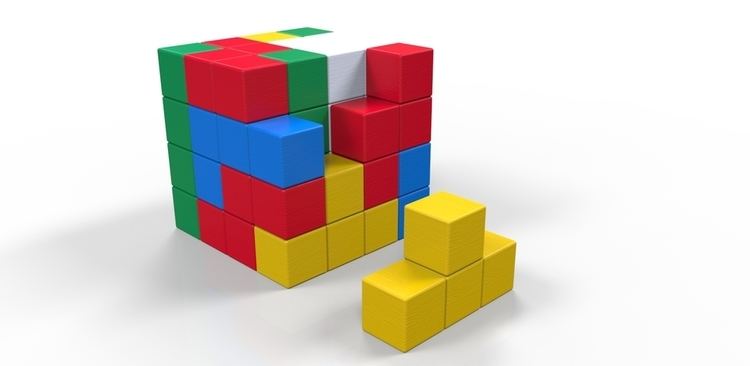 | ||||||||||||||||||||||||||||||||||
Developer Technology and Entertainment Software Similar | ||||||||||||||||||||||||||||||||||
Block out 3d tetris
3D Tetris is a puzzle video game developed by Technology and Entertainment Software and published by Nintendo. It was initially released for the Virtual Boy on March 22, 1996 in North America only. The game allows players to control multiple falling blocks, rotating and positioning them to clear layers in a "Well". The game is similar to other Tetris games, but uses a three-dimensional playing field as opposed to the traditional two-dimensional view. The game contains multiple modes and gametypes, as well as different difficulty settings and levels, which change different aspects of the gameplay.
Contents
- Block out 3d tetris
- asmr binaural plastic puzzle 3d tetris no talking
- Gameplay
- Development
- Reception
- References

Parts of 3D Tetris, such as the blocks, are rendered as 3D wire-frame models. A version of the game entitled Polygo Block (ポリゴブロック, Porigo Buroku), meaning literally Polygonal Block, was to be released in February 1996 in Japanese markets, but never emerged. The game received a range of negative and positive reviews.
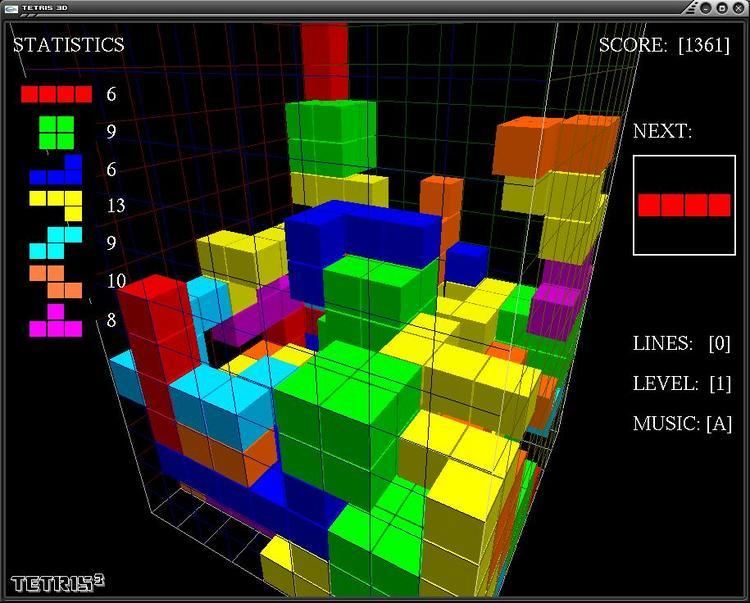
asmr binaural plastic puzzle 3d tetris no talking
Gameplay

3D Tetris is a Puzzle game that uses a three-dimensional playing field as opposed to the traditional two dimensions used in other versions of Tetris. The game contains multiple different modes; "3-D Tetris", "Center-Fill" and "Puzzle", each having different gametypes. The player can choose multiple different levels for each of these modes, which change the speed at which the blocks fall, as well as choose three difficulty settings; easy, medium and hard. The difficulty changes which types of block fall. Each mode contains a "Well", which itself contains 5 vertical layers that the player must fill with falling three dimensional blocks that can be rotated horizontally and vertically, as well as positioned in four different directions. Each block displays a shadow underneath it which indicates where it will land. The game's camera continually adjusts itself, but the player can manually readjust it. Each mode's HUD displays a "radar" which provides information about each of the Well's five layers, as well as the next block to fall, which is represented by a "block character".
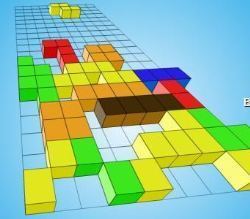
In the 3-D Tetris mode, a layer disappears when it's filled with blocks, scoring the player points which are displayed in the HUD. If blocks stack over the top of the Well, the number of layers will go down by one. The game is over when the final layer is lost. One of its gametypes, "Type A", requires the player to gain as many points as possible, and its other gametype, "Clear It!", contains multiple stages which the player progresses through by clearing five layers on each stage.
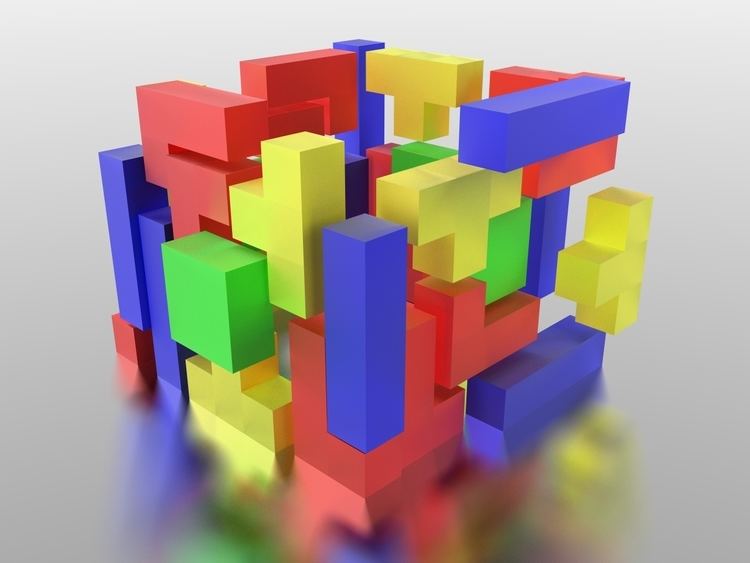
In the Center-Fill mode, the player places blocks in symmetrical patterns around center blocks placed in each of the Well's layers. If a block is placed in a layer's center block, it disappears, and any other blocks in the layer will also disappear if they have been successfully placed in a symmetrical pattern. Points are gained based on the number of blocks in, the complexity of and the height of the symmetrical layer. A symmetrical pattern is indicated by a "Formation symbol" shown in the HUD's radar, as well as the player's score. Like the 3-D Tetris mode, layers will be lost if the blocks go over the top of the Well, and the game's over when all layers are lost. One of its gametypes, Type A, requires the player to complete as many symmetrical layers as possible, gaining points; another gametype, "Type B", is similar to Type A but includes obstacles that stop blocks from being placed in their location. New obstacle blocks appear as the player makes a layer disappear, and bonus points are scored as the level increases. In both Type A and Type B, the score is divided by the number of blocks dropped into the center squares. Its other gametype, Clear It!, requires the player to clear ten symmetrical layers on each stage to progress to the next stage.
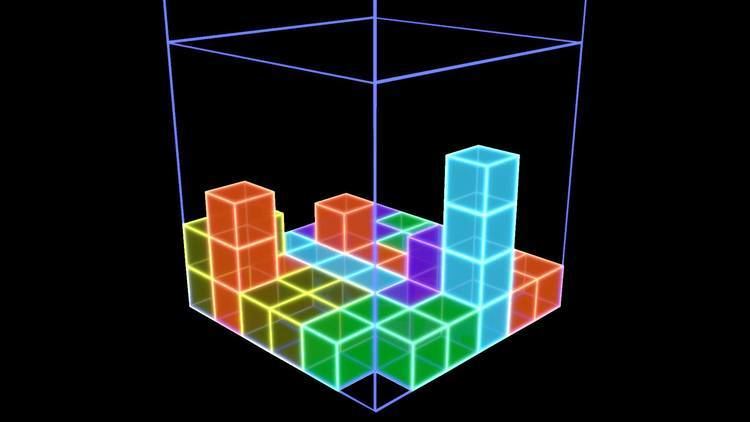
In the Puzzle mode, a shape is displayed in the Well at the beginning of each stage. The player is tasked with getting to the highest stage possible by placing blocks in the displayed shape to progress to the next stage. At the end of each stage, a "stage-ending animation" is displayed. If an incorrect shape is placed, the game is over. 3D Tetris includes an option to save high scores and names entered from the 3-D Tetris and Center-Fill modes, along with progress in the Puzzle mode, to a battery backup.
Development
3D Tetris was developed by T&E Soft for release in the United States. A version was planned for Japanese markets entitled Polygo Block (ポリゴブロック, Porigo Buroku), meaning literally Polygonal Block and was to be released in February 1996, but was never released.
Like all other Virtual Boy games, 3D Tetris uses a red-and-black color scheme and uses parallax, an optical trick that is used to simulate a 3D effect. The game contains 30 different block types, and renders each one as a 3D wire-frame model until they fall to the bottom of the well, where their faces are filled in. It was the last game released on the Virtual Boy in North America.
Reception
3D Tetris received a mixture of positive and negative reviews. Aaron Curtiss, writing for The Los Angeles Times, said that 3D Tetris "adds nothing to the original and leaves players feeling cheated". He criticized the control scheme and brushed off the 3D effects as somewhat superfluous. His views of the graphics were hardly better; he called them "vector graphic with some shading". Entertainment Weekly had even harsher criticism, calling it a "logy, eye-straining, desperate-to-please variant" of the Blockout game that came before it. A reviewer for magazine Videogames felt that putting Tetris in 3D did not add value to the game and made a "simple concept" less appealing. The reviewer felt however that the 3D was done well, and that the perspective added "intrigue and difficulty". GamePro's "Scary Larry" felt that the sound and visuals were nondescript, and that the controls were frustrating, while noting that it's still addictive. USgamer writer Jaz Rignall suggested that the game was "about as much fun as getting pepper sprayed in the face". GamesRadar editor Brett Elston felt that 3D Tetris' visuals were "appalling" and commented that he couldn't understand what was happening due to the poor visuals. He felt that if it was remade for the 3DS and done better, it would be better than Tetrisphere (another 3D Tetris game). Game Informer considered a 3-dimensional Tetris game a "good idea," but called this attempt "fairly boring," and wished it had a faster pace. A writer for Nintendo Power stated that the game has a user-friendly button configuration that is "easy to master".
Mark Long, CEO of Zombie Studios, preferred 3D Tetris to Tetris on the Game Boy, and considered it the best game for the Virtual Boy.
